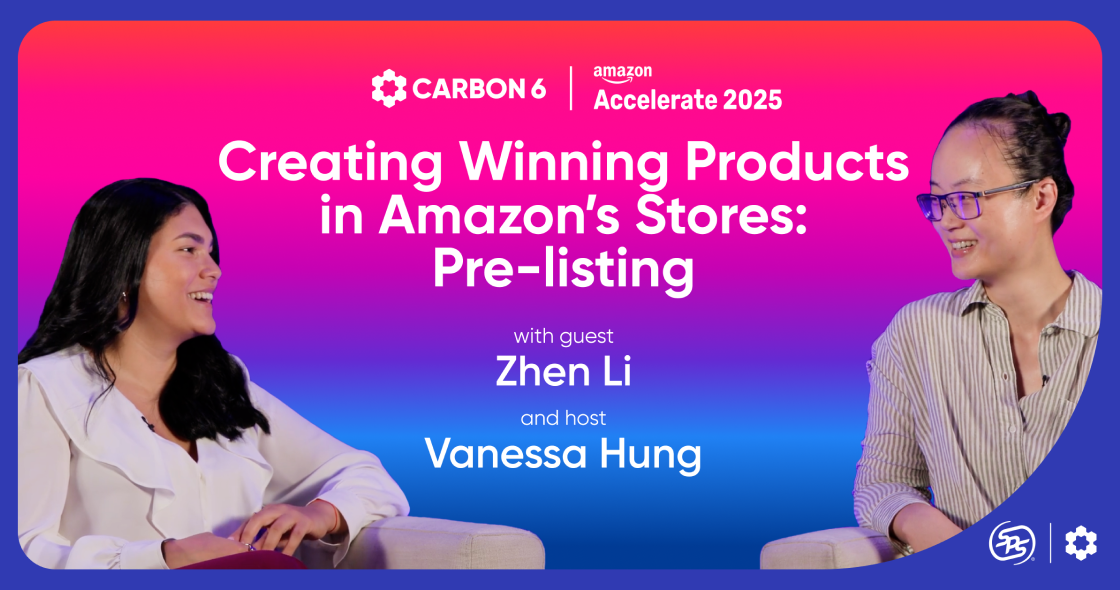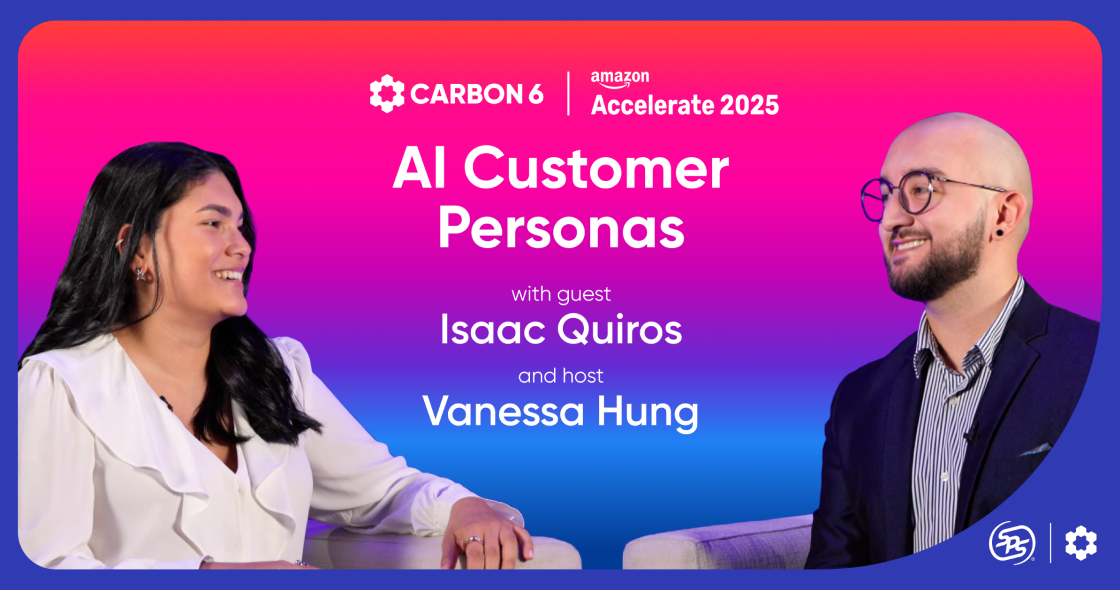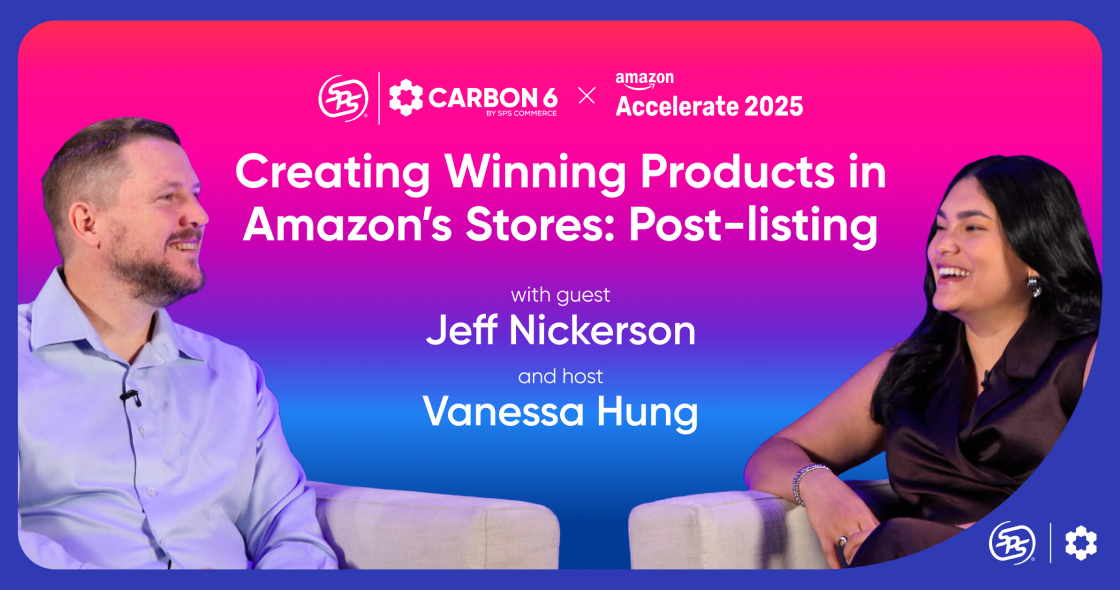Listen to This Article
Let me hit you with a hard truth:
Most Amazon sellers are leaving money on the table with their main hero images.
I know because I’ve spent years coaching brands on how to fix their click-through rates and I’ve analyzed thousands of Amazon listings.
Here’s what I’ve learned:
→ 70% of Amazon shoppers never click past page one
→ Your main hero image is responsible for up to 63% of your click-through rate
→ Most sellers optimize for everything EXCEPT what actually drives the click
Amazon SERP optimization isn’t just important—it’s the difference between thriving and dying on the platform.
In this guide, I’ll show you exactly how we use PickFu’s SERP Click Test to transform underperforming listings into customer magnets that convert like crazy.
Let’s dive in.
The Brutal Reality of Amazon SERP Competition
Picture this:
You’ve spent months developing your product. You’ve optimized your backend keywords, written compelling bullet points, and even invested in Premium A+ content.
But here’s the kicker: none of that matters if shoppers don’t click on your listing in the first place.
On Amazon, visibility without clicks is worthless.
The A9 algorithm isn’t just measuring relevance. It’s measuring customer behavior:
- Are people clicking on your listing?
- Are they converting after they click?
- Are they leaving positive reviews?
When your CTR drops, your ranking drops.
When your ranking drops, your sales drop.
It’s a vicious cycle that kills businesses every day.
But it doesn’t have to be this way.
The 3-Second Decision Window
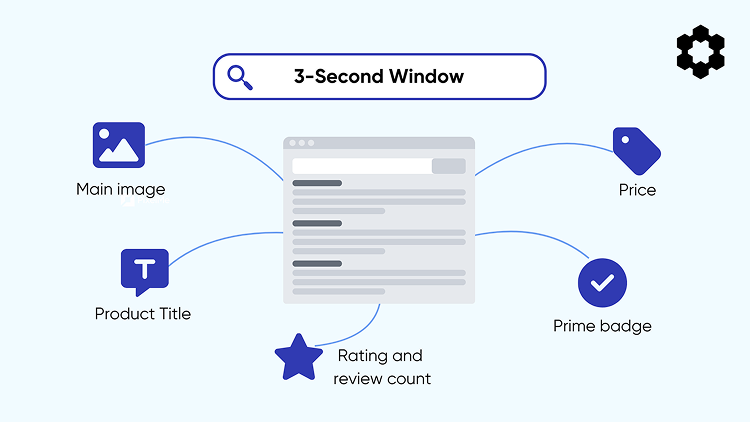
I’ve run hundreds of eye-tracking tests at PickFu, and the data is crystal clear:
Shoppers make their clicking decision in less than 3 seconds.
In that micro-moment, they’re primarily processing your:
- Main hero image
- Title (often just the first 5-7 words)
- Price
- Rating and review count
- Prime badge
That’s it.
That’s your entire chance to win the click.
And guess which element carries the most weight? Your main hero image.
It’s not just another piece of the puzzle – it’s the cornerstone of your entire Amazon SERP optimization strategy.
The Amazon SERP Battlefield: Where Sales Are Won and Lost
Here’s what most so-called “Amazon experts” won’t tell you:
Your perfectly optimized product listing means absolutely nothing if shoppers scroll right past it in search results.
The Amazon SERP is the ultimate battlefield where customer decisions are made in milliseconds. And the weapons that win this battle aren’t what most sellers think.
Let me break it down.
What Actually Matters on Amazon Search Results Pages:
- Visual Differentiation:
Can shoppers instantly distinguish your product from competitors? - Immediate Benefit Recognition:
Do customers immediately understand what problem your product solves? - Trust Signals:
Does your listing display social proof that builds confidence? - Decision Simplification:
Does your image reduce the mental effort required to choose? - Value Perception:
Does your listing quickly communicate value relative to price?
Most sellers focus on keyword stuffing their titles or tweaking their backend search terms. But these elements only help you appear in search results – they don’t help you get the click.
And without the click, nothing else in your listing ever gets seen.
A Day in the Life of an Amazon Shopper
To truly understand Amazon SERP optimization, you need to get inside the mind of your customer.
Let me walk you through what actually happens when someone shops on Amazon:
- They type a search query (usually 2-4 words)
- They scan the first 3-5 results in about 1.5 seconds
- If nothing immediately catches their eye, they quickly scan the next 5-7 results
- They click on the first listing that visually communicates it solves their problem
- If the listing meets expectations, they buy. If not, they hit the back button and try again
This entire process takes less than 30 seconds.
The key insight: Shoppers aren’t reading. They’re scanning for visual cues that signal “this is what you’re looking for.”
And what’s the primary visual cue? Your main hero image.
Why Most Amazon Images Fail (And How to Fix Them)
Most Amazon sellers approach their hero image all wrong.
They think: “I need a professional-looking product photo on a white background.”
But that’s the bare minimum. It’s what EVERY seller is doing.
The real question is: what makes YOUR product stand out when it’s surrounded by 20+ competitors that look nearly identical?
Through thousands of tests at PickFu, I’ve identified the patterns that separate winning images from losers:
What Doesn’t Work:
- Generic product shots that look like every competitor
- Complicated backgrounds that distract from the product
- Poor lighting that makes products look cheap
- Confusing angles that don’t clearly show what the product is
- Images that don’t instantly communicate the primary benefit
What Works Every Time:
- Hero images that instantly communicate who the product is FOR
- Subtle, integrated size indicators for perspective
- Strategic use of high-contrast colors that pop against Amazon’s interface
- Three-quarter angle shots that show depth and dimensionality
- Visual elements that instantly communicate primary benefits
But you shouldn’t just take my word for it.
The beauty of PickFu’s SERP Click Test is that you can see exactly how YOUR specific customers respond to YOUR specific product in YOUR specific category.
The Psychology Behind High-Converting Hero Images

The science of attention is fascinating – and critical for Amazon sellers to understand.
When someone looks at search results, their eyes move in predictable patterns that we can track and analyze. Here are the key psychological triggers that drive clicks:
Pattern #1: The F-Pattern Eye Movement
Shoppers scan Amazon search results in an F-pattern: they look across the top results, then move down and scan horizontally again, but for a shorter distance.
This means your product needs to communicate its value proposition immediately, even when given just a fraction of a second of attention.
Pattern #2: The Color Contrast Effect
The human eye is naturally drawn to contrast. Products with color schemes that stand out against Amazon’s white and orange interface receive up to 32% more visual attention.
This doesn’t mean your product needs to be bright red – it means your image composition needs to create visual separation from the surrounding elements.
Pattern #3: The Completion Principle
Our brains naturally seek to complete patterns and fill in missing information. Images that show a product in use or demonstrate the “before and after” effect trigger this completion instinct and gain more clicks.
Pattern #4: The Familiarity Bias
Shoppers are drawn to products that feel familiar yet distinctive. This is why subtle variations on established category norms perform better than completely unusual presentations.
Understanding these psychological principles has helped us develop image testing methodologies that don’t just measure what works, but explain WHY it works.
The PickFu SERP Click Test: My Secret Weapon
When I coach Amazon brands, the first thing I ask is: “Have you tested your main image with actual customers from your target demographic?”
The answer is almost always no.
Traditional A/B testing on Amazon is not ideal to “start” testing with. If you test a poor-performing variant on your live listing, you can tank your ranking while the test runs.
That’s why I always start with PickFu’s SERP Click Test. Here’s how it works:
- We take a screenshot of the SERP results page showing you next to competitors.
- We select a panel that matches your exact customer avatar (age, income, shopping habits)
- We track exactly where their eyes go and what they click on
- We collect written feedback explaining WHY they made their choice
- We identify exactly what elements drive clicks for your specific product
The results are often shocking to sellers.
In one recent test for a kitchen accessory client, we discovered that shoppers were completely overlooking their “professional” product-only shot in favor of competitors showing the product in use.
After implementing a new image that included a small “in action” element while maintaining Amazon compliance, their CTR jumped 47%.
That’s the power of data-driven decisions versus assumptions.
Demographic Targeting: Why One Size Doesn’t Fit All
One of the biggest mistakes I see Amazon sellers make is assuming all customers respond to the same visual triggers.
The truth? Different customer segments respond to dramatically different image elements.
For example, in a recent PickFu test for a fitness product:
- 18-24 year old males were drawn to images highlighting performance metrics
- 35-45 year old females responded better to images showing results and ease of use
- 55+ customers clicked more frequently on images demonstrating safety features
This is why the demographic targeting capability of PickFu’s testing platform is so powerful. You’re not just testing what works – you’re testing what works with YOUR specific customer avatar.
Some examples of demographic factors we can target:
- Age, gender, and income brackets
- Purchase behavior (Prime members, frequent shoppers)
- Category-specific interests
- Family status (parents, homeowners, etc.)
- Geographic location
When you combine this demographic precision with eye-tracking data, you get a level of insight that simply isn’t available through traditional A/B testing methods.
Demystify Amazon DSP with our comprehensive DSP white paper. Learn how top brands leverage Amazon’s first-party data to create powerful retargeting campaigns and reach high-intent customers across multiple platforms. Download your free DSP guide now.
The 5-Step Hero Image Optimization Framework
Based on hundreds of tests, here’s the exact framework I use with brands to optimize their main hero images:
Step 1: Establish Your Baseline
Run a SERP Click Test with your current image against actual competitors to see where you stand. Don’t skip this step—you need a benchmark.
Step 2: Identify Click Triggers
Analyze the heat map data to see exactly what visual elements are capturing attention and driving clicks in your category.
Step 3: Create Strategic Variants
Develop 3-5 new image concepts that incorporate the click triggers while maintaining your brand identity and Amazon compliance.
Step 4: Test Against Your Ideal Customer
Run new SERP Click Tests with demographically targeted panels that match your ideal customer. The key here is testing with the RIGHT audience.
Step 5: Implement and Monitor
Deploy your winning image and track changes in impressions, clicks, and conversion rates. The data never lies.
This isn’t theory. It’s a battle-tested system that consistently delivers results.
Competitive Analysis: Turning Competitor Insights Into Your Advantage
The Amazon marketplace isn’t just about optimizing your own listing – it’s about outperforming your competition.
PickFu’s SERP Click Test gives you something incredibly valuable: direct competitive insight without the guesswork.
Here’s how our customers do this (and how you can, too).
Step 1: Identify Your True Competition
Create a PickFu SERP Click Test using a screenshot of a LIVE Amazon SERP page with your product alongside the actual top-ranking competitors for your primary keywords.
Step 2: Analyze Click Distribution
When your results come back, measure exactly how clicks are distributed among all listings on the page to understand your current competitive position.
Step 3: Conduct Pattern Analysis
Identify visual patterns among the top-performing competitor listings to understand what’s working in your category.
Step 4: Isolate Winning Elements
Break down exactly which elements of competing images are capturing attention based on your heat map data.
Step 5: Engineer a Superior Approach
Incorporate the most effective elements while adding unique differentiators that set your listing apart.
This competitive analysis process has helped countless brands move from page 2 obscurity to page 1 dominance.
Real-World Results: A Case Study
Let me share a recent win from a client selling portable chargers:
Their original image showed a clean, professional product shot on white. Conversion rate was decent at 18%, but CTR was stuck at 0.32%, well below category average.
Using our SERP Click Test, we discovered three critical insights:
- Competitors showing size scale (compared to a phone) got 54% more attention
- Images highlighting charging speed with small graphic elements received 37% more clicks
- Their target demographic (25-34 year old professionals) responded strongly to lifestyle elements showing the product in use
Based on these insights, we developed a new main image that:
- Maintained the clean, white background for Amazon compliance
- Added a subtle size comparison with a phone silhouette
- Incorporated a small “2X faster charging” graphic element
- Included a tiny corner insert showing the product in use
Results after implementation:
- CTR increased A LOT
- Conversion rate improved from 18% to 21% (+17%)
- Organic ranking for primary keywords improved from page 2 to page 1
- Overall sales velocity increased by 41%
All from changing a single image.
That’s the leverage point most sellers completely miss in their Amazon SERP optimization strategy.
Amazon Image Compliance: Creative Within Constraints
One objection I often hear from sellers: “But Amazon has strict image guidelines! I can’t do anything creative.”
This is a fundamental misunderstanding of what makes an effective Amazon image.
Amazon’s image requirements are:
- Main image must have a pure white background (RGB 255, 255, 255)
- Product must fill at least 85% of the image frame
- No additional text, graphics, or inset images
- No props or accessories not included with the product
- No brand logos or watermarks
But within these constraints, there’s still plenty of room for optimization:
Compliant Optimization Techniques That Work:
- Strategic product angle selection for maximum impact
- Thoughtful composition that highlights key features
- Proper lighting to enhance perceived quality
- Careful arrangement of included accessories
- Optimal zoom level to showcase important details
- Color enhancement within natural limits
When clients tell me “we can’t optimize our image because of Amazon’s rules,” I show them how their top competitors are following the rules while still creating images that drive significantly higher CTR.
The difference isn’t breaking the rules – it’s mastering the art of optimization within them.
Beyond the Hero Image: Comprehensive SERP Domination
While the main image deserves priority, truly optimizing your Amazon presence requires a holistic approach.
This is where tools from our partners at Carbon6 become incredibly valuable:
External Traffic Strategy
Using Carbon6’s PixelMe to drive targeted external traffic creates a powerful signal to Amazon’s algorithm. When you bring qualified shoppers to your listing from outside sources, Amazon rewards you with improved organic ranking.
The best part? Amazon’s Brand Referral Bonus program actually pays you back up to 10% of sales from external traffic – essentially subsidizing your traffic acquisition.
Keyword Optimization and Research
Carbon6’s Organic Rank White Paper provides a comprehensive framework for identifying and leveraging the right keywords. Their data-driven approach helps you understand not just what shoppers are searching for, but the intent behind those searches.
This intelligence allows you to align your listing optimization efforts with actual customer language and behavior.
Boost your Amazon rank with our Organic Ranking white paper. Our latest guide delivers smart, straightforward strategies for enhancing organic rankings through external traffic, listing optimization, and paid ad campaigns. Download your free ranking guide now.
The PickFu Testing Ecosystem
Beyond SERP Click Tests, we’ve built a complete testing ecosystem at PickFu that helps Amazon sellers optimize every element of their listing:
Secondary Image Testing
Don’t ignore the other images in your stack – discover which ones are most important for conveying info about your product and selling to your audience.
Title Testing
Determine which title formulations generate the most interest and comprehension with your target audience.
Bullet Point Testing
Identify which benefit structures and language resonate most strongly with potential buyers.
Price Perception Testing
Understand how different price points affect value perception and purchase intent for your specific product.
Enhanced Brand Content Testing
Optimize below-the-fold content for maximum conversion impact once shoppers click through.
The brands that consistently win on Amazon aren’t just guessing – they’re testing every element with real customers before implementation.
The Compounding Effect of Optimization
Here’s something most Amazon sellers don’t appreciate: optimization compounds.
When you improve your click-through rate from 1% to 1.5%, that’s not just a 50% increase in clicks. It’s the beginning of a positive feedback loop:
- More clicks lead to more sales
- More sales improve your organic ranking
- Better ranking increases your impressions
- More impressions generate even more sales
- Higher sales velocity signals relevance to Amazon
- Amazon rewards relevance with even better placement
This compounding effect explains why proper SERP optimization doesn’t just improve your metrics linearly; it can create exponential growth.
I’ve seen brands double their Amazon business in 60 days after implementing proper image optimization and SERP click strategies.
Why? Because small improvements at the top of the funnel cascade into massive gains throughout your entire Amazon presence.
Implementation Timeline: What to Expect
When clients ask me how quickly they’ll see results from SERP optimization, I tell them to think in three phases:
Phase 1: Testing and Discovery
- Run initial SERP Click Tests
- Analyze heat map data and feedback
- Develop new image variants based on findings
- Validate with targeted demographic testing
Phase 2: Implementation and Monitoring
- Deploy winning main image
- Update secondary images to align with new strategy
- Begin tracking key performance metrics
- Make any necessary adjustments based on early data
Phase 3: Results and Scaling
- Observe ranking improvements as CTR increases
- Monitor conversion rate changes
- Track overall sales velocity and growth
- Identify additional optimization opportunities
Most brands see initial CTR improvements within days of implementation, with ranking changes following in 2-3 weeks, and the full compounding effect materializing within 60 days.
The key is patience coupled with careful tracking. The Amazon algorithm takes time to fully register and reward improved customer engagement signals.
The Future of Amazon SERP Optimization
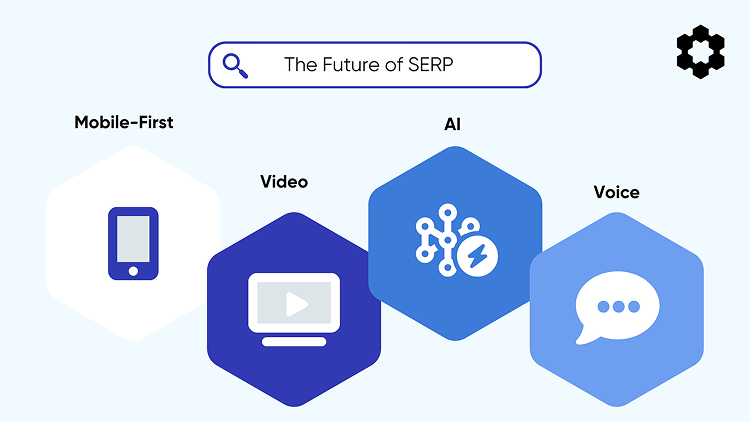
As we look ahead, several trends are reshaping the landscape of Amazon search:
Mobile-First Optimization
Over 65% of Amazon shopping now happens on mobile devices, which show fewer products per screen. This makes your main image even more critical as screen real estate shrinks.
Video Integration in Search Results
Amazon has begun testing video thumbnails in search results. Early data suggests these moving elements capture significantly more attention than static images.
AI-Powered Personalization
Amazon increasingly personalizes search results based on individual shopping behavior. This makes understanding your specific customer segments more important than ever.
Voice Search Integration
As voice shopping grows, optimization for natural language queries is becoming increasingly important for visibility across Amazon’s ecosystem.
Enhanced Brand Content in Search
Amazon is testing showing elements of Enhanced Brand Content directly in search results for certain categories, creating new optimization opportunities.
Staying ahead of these trends requires constant testing and adaptation. What works today may not work tomorrow as Amazon evolves its platform and customer behaviors shift.
What I’ve Learned Testing Thousands of Amazon Listings
After thousands of tests and consultations with Amazon sellers across virtually every category, I’ve developed some core principles that consistently drive results:
1. The Click Is Everything
Without the click, nothing else in your listing matters. Prioritize your resources accordingly.
2. Data Beats Assumptions Every Time
What you think will work and what actually works are often completely different. Let testing data guide your decisions.
3. Your Customer Is Unique
Generic best practices are a starting point, not a solution. Test with your specific customer demographic for accurate insights.
4. Optimization Is Never “Done”
The marketplace is constantly evolving. What works today may not work tomorrow. Testing should be ongoing, not a one-time event.
5. Small Changes Create Big Results
The difference between a good image and a great one is often subtle. The details matter.
These principles have guided our approach at PickFu and helped countless brands transform their Amazon performance.
Final Thoughts: The Competitive Advantage of Data
In my years working with Amazon brands and now at PickFu, I’ve seen one pattern repeat again and again:
The sellers who make decisions based on data consistently outperform those who rely on assumptions or “industry best practices.”
Your main hero image isn’t just another listing element; it’s the gateway to your entire Amazon business. It deserves rigorous, data-driven optimization.
And the best part? Most of your competitors aren’t doing this.
While they’re still arguing about backend keywords or Premium A+ content, you can steal their clicks (and sales) by focusing on what actually drives customer behavior.
Remember my CTR mantra:
“It all starts with the click.”
Without the click, nothing else matters.
→ Optimize your main image with PickFu’s SERP Click Test
→ Drive external traffic with Carbon6’s PixelMe
→ Implement the keyword strategy from their Organic Rank White Paper
Follow this framework, and you’ll be light years ahead of 95% of Amazon sellers.
Now go get those clicks.

